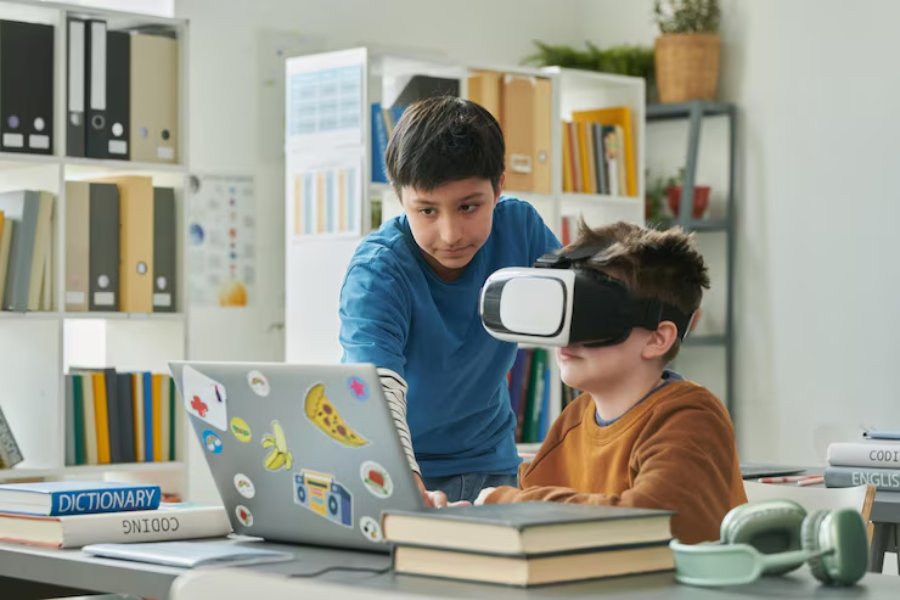Technology has become deeply embedded in modern education, transforming how teachers instruct and students learn. Smart equipment, ranging from interactive whiteboards to AI-powered learning tools, has redefined the classroom experience, bringing a new level of engagement and adaptability.
This digital transformation has allowed schools, universities, and training centers to move beyond traditional teaching methods and embrace personalized, data-driven learning. The rise of smart equipment has improved efficiency and fostered critical thinking and creativity among students, preparing them for a technology-driven world.
Interactive Classrooms and Digital Collaboration
The modern classroom has evolved from static chalkboards and printed materials to dynamic, interactive environments that promote collaboration and creativity. Interactive whiteboards, smart projectors, and tablet-based platforms enable teachers to present lessons in visually stimulating ways, helping students engage more deeply with content. Group activities have been transformed through shared digital spaces where students can simultaneously contribute ideas, annotate documents, and access resources.
These innovations have made learning more participatory, breaking the traditional model of passive listening and replacing it with active involvement. By combining visual, auditory, and tactile learning elements, smart classrooms have helped bridge diverse learning styles, improving comprehension and retention across age groups.
Immersive Learning Tools
The integration of gamification into smart educational tools has transformed student engagement, making lessons interactive and motivating participation. Platforms such as those at www.pasco.com/openscied provide hands-on science experiments that combine digital feedback with real-world learning. This allows students to explore concepts actively rather than passively observing.
Virtual and augmented reality equipment further enhances this experience, letting learners simulate environments, conduct experiments safely, and visualize abstract ideas in three dimensions. History, biology, and physics topics become more tangible through these tools, encouraging curiosity and critical thinking. Gamified learning and immersive technologies sustain attention, promote collaboration, and make complex subjects accessible and exciting for all students.
Personalized Learning Through Smart Devices
Smart equipment has opened the door to personalized education, where learning adapts to each student’s pace, interests, and abilities. Tablets, laptops, and wearable technology can collect and analyze performance data, allowing teachers to tailor lessons and assignments accordingly. Intelligent tutoring systems and adaptive learning software can identify gaps in understanding and provide instant feedback or alternative exercises.
This individualized approach reduces frustration and boredom by meeting students at their skill level, whether they need extra help or advanced challenges. Personalization empowers students to take ownership of their education, making them more engaged and self-motivated learners.
The Role of Artificial Intelligence in Education
Artificial intelligence is becoming a central force behind smart equipment in education. AI-driven tools are capable of assessing student progress in real time, predicting areas of difficulty, and suggesting customized interventions. Virtual teaching assistants and chatbots provide 24/7 academic support, answering questions or guiding learners through complex topics outside classroom hours.
AI assists educators by automating administrative tasks such as grading, attendance tracking, and lesson planning, giving them more time to focus on meaningful student interactions. Through intelligent data analysis, AI enhances teaching efficiency and provides valuable insights into how different learning strategies affect student outcomes.
Data Analytics and Educational Insights
Smart equipment generates a wealth of data that can be harnessed to improve teaching and learning outcomes. Learning management systems, digital exams, and classroom sensors provide detailed analytics on participation, progress, and comprehension. Teachers can use this data to identify trends, evaluate curriculum effectiveness, and implement targeted interventions for struggling students.
Administrators gain the ability to track institutional performance, optimize resource allocation, and plan for future technological investments. Data-driven decision-making brings a new level of precision to education, replacing intuition with measurable evidence. The ability to translate data into actionable insights allows educators to continuously refine their strategies for maximum impact.
Accessibility and Inclusion Through Smart Technology
Smart equipment is breaking barriers for students with disabilities, making education more inclusive. Voice recognition software, screen readers, and text-to-speech programs have opened access to students who previously faced significant challenges in traditional learning environments.
Digital translation tools assist learners from diverse linguistic backgrounds, while adaptive keyboards and motion-based controls make participation possible for those with physical limitations. These innovations ensure that every learner can engage meaningfully with educational content.
The rise of smart equipment in education represents a transformation in how knowledge is delivered, understood, and applied. From personalized learning and AI support to immersive simulations and inclusive tools, technology has reimagined what is possible within the classroom.
By combining innovation with accessibility, smart education is creating learning environments that are more engaging, responsive, and equitable than ever before. As technology continues to evolve, its integration into education will remain central to preparing students for the challenges and opportunities of the future.

